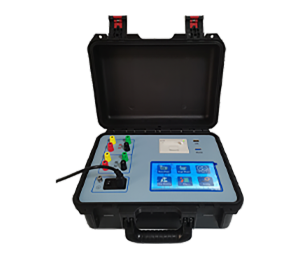 English
English


Understanding the CT Winding Resistance Testing Process and Its Importance in Electrical Maintenance
Understanding the CT Winding Resistance Test
The current transformer (CT) winding resistance test is a crucial procedure employed in electrical engineering to ensure the reliability and performance of current transformers. This test aims to measure the resistance of the windings in a CT, which is essential for assessing the transformer’s integrity and operational efficiency. Proper execution of this test can prevent potential failures and enhance the operational life of electrical systems in which CTs are utilized.
Importance of CT Winding Resistance Testing
Current transformers are integral components in power systems, typically used for measuring alternating current (AC) and providing isolation for metering equipment. The winding resistance of a CT can affect its accuracy, response time, and overall performance. High resistance may lead to errors in current measurement, affecting protections and metering systems, whereas low resistance may indicate issues such as shorted turns in the windings or other faults.
Regular testing is necessary to identify any anomalies that could lead to operational failures. By establishing a baseline resistance measurement during initial installation and subsequent tests over time, engineers can monitor changes in winding resistance that might indicate issues like insulation breakdown or corrosion.
The Testing Process
The CT winding resistance test is typically performed using a precision resistance meter or a low-resistance ohmmeter. Before commencing the test, it's critical to ensure that the CT is de-energized and isolated from the electrical network to guarantee the safety of personnel and the equipment.
1. Preparation - Disconnect the secondary circuit of the CT. - Make sure all safety protocols are followed. 2. Connection - Connect the resistance meter leads to the CT terminals. - Ensure secure connections to avoid erroneous readings.
ct winding resistance test

3. Measurement - Activate the resistance meter and take readings. - It’s common practice to record the temperature during the test, as resistance can vary with temperature.
4. Analysis - Compare the measured resistance with the manufacturer’s specifications and previous readings. - Any significant deviation may require further investigation.
5. Documentation - Finally, document the results and any observations. This record is valuable for future reference and trend analysis.
Factors Affecting Resistance Measurements
Various factors can influence CT winding resistance readings. Temperature is one of the most significant factors; as temperature increases, resistance typically increases as well. Furthermore, the age of the CT can play a role; older transformers may experience changes in resistance due to wear and tear on insulation or other components.
Environmental factors such as humidity and exposure to contaminants can also impact performance. Regular maintenance and testing can mitigate these risks and prolong the transformer’s lifespan.
Conclusion
In conclusion, the CT winding resistance test is essential for the optimal performance and safety of electrical systems. Regular testing helps in early detection of potential issues, ensuring that current transformers function effectively within their designed parameters. By understanding this vital testing procedure, electrical engineers can enhance the reliability of power systems, contributing to greater efficiency and safety in electrical networks. Thus, the implementation of routine CT winding resistance tests not only preserves equipment but also safeguards the entire electrical infrastructure from unexpected failures.
-
Differences between open cup flash point tester and closed cup flash point testerNewsOct.31,2024
-
The Reliable Load Tap ChangerNewsOct.23,2024
-
The Essential Guide to Hipot TestersNewsOct.23,2024
-
The Digital Insulation TesterNewsOct.23,2024
-
The Best Earth Loop Impedance Tester for SaleNewsOct.23,2024
-
Tan Delta Tester--The Essential Tool for Electrical Insulation TestingNewsOct.23,2024





